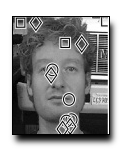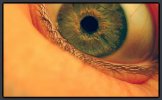
We propose a method to learn heterogeneous models of
object classes for visual recognition. The training images
contain a preponderance of clutter and learning is unsupervised. Our models represent objects as probabilistic constellations of rigid parts (features). The variability within
a class is represented by a joint probability density function on the shape of the constellation and the appearance
of the parts. Our method automatically identifies distinctive features in the training set. The set of model parameters is then learned using expectation maximization (see the
companion paper [11] for details). When trained on different, unlabeled and unsegmented views of a class of objects,
each component of the mixture model can adapt to represent a subset of the views. Similarly, different component models can also specialize on sub-classes of an object
class. Experiments on images of human heads, leaves from
different species of trees, and motorcars demonstrate that the method works well over a wide variety of objects.
Download: pdf
Text Reference
Markus Weber, Max Welling, and Pietro Perona.
Towards automatic discovery of object categories.
In
CVPR, II: 101–108. 2000.
BibTeX Reference
@inproceedings{WeberWP_CVPR_2000,
AUTHOR = "Weber, Markus and Welling, Max and Perona, Pietro",
TAG = "object_recognition",
TITLE = "Towards Automatic Discovery of Object Categories",
BOOKTITLE = "CVPR",
YEAR = "2000",
PAGES = "II: 101-108",
BIBSOURCE = "http://www.visionbib.com/bibliography/match595.html#TT42152"
}
